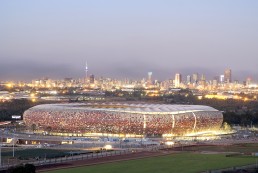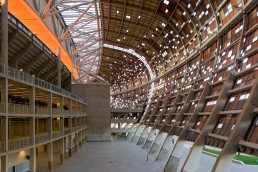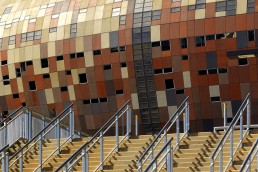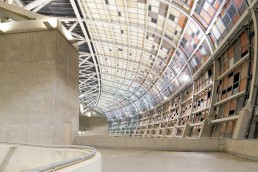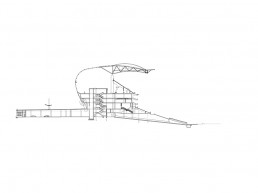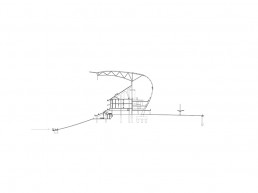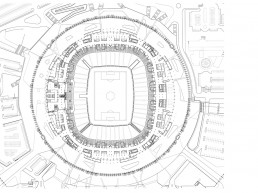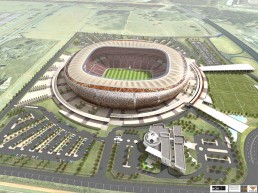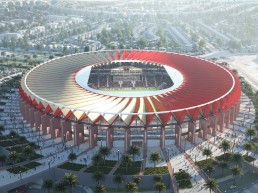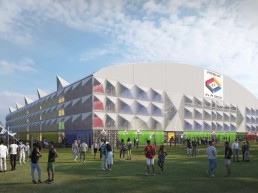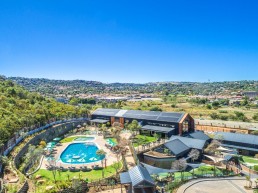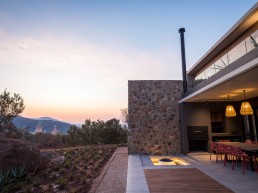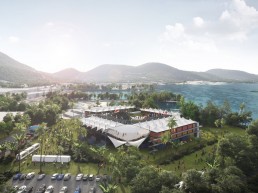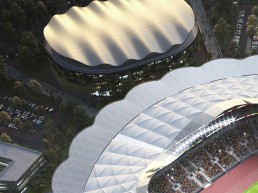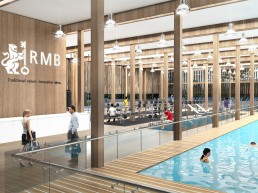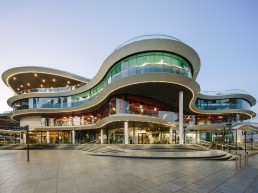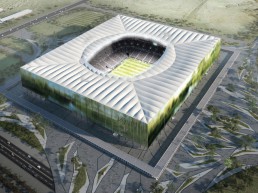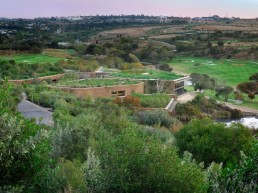A world class stadium
80 000 cubic metres of concrete, 9000 tons of reinforcing steel and 8000 tons of structural steel were used to transform the FNB stadium into one of the most striking, impressive and well-equipped stadiums in the world. Hosting both the 2010 FIFA World Cup opening match and final, the 88 958 seater venue sits at the nexus of a dynamic transportation hub serving all the surrounding areas.
The stadium is made up of 3 tiers, lower embankment, upper embankment, two skybox or suite levels and the upper tier.
The calabash or African pot design represents a melting pot of cultures and sits in a depression as if it is being naturally fired. The pot’s façade is made up of laminated fibre reinforced concrete panels, referencing the shades and textures of the calabash and is punctured by open panels which come to life when the inside volumes are illuminated. Representing the road to the final and further entrenching the idea of inclusiveness, the façade has ten vertical lines that align geographically to the nine other 2010 stadia, as well as the Berlin stadium where the previous world cup came from. This captures the tradition of pattern making, which tells the story of the person making the pot or those that will use it.
These lines continue onto the podium where the scores are featured and run through the orange seating bowl, like dark grey lines slicing through the Highveld sunset. Cut under the existing grandstand and designed as a sloping mine shaft, the players’ tunnel pays tribute to Joburg’s rich gold mining history. The concourses on all levels provide access all-round the stadium except for the VIP lounges, hospitality areas and stadium management offices, which are accessed via secure lobbies.
THE CHALLENGE
A National Geographic production that tracks each of the major stadiums being built for the Soccer World Cup 2010. Watch until the last third where Bob van Bebber, Project Director and lead design architect on Soccer City voices concern about the scale of the job, the short turnaround time and the lack of resource as challenges to be overcome in order to meet the deadline.
The scale of the Build
A video that maps the scale of the project in numbers and volume of materials required to build Soccer City as a world class soccer stadium.
Ready for the game
Bob van Bebber takes local news journalists from the Mail & Guardian around the almost complete stadium. On time and within budget for the opening game of the 2010 FIFA Wordl Cup soccer tournament.
| Appointment | 2007 |
| Client | City of Johannesburg |
| Completion | 2009 |
| JV Architect | Boogertman Urban Edge + Partners |
| Area | 88 589 seats |
| Quantity Surveyor | Llale & Company |
| Strucutral Engineer | PD Naidoo & Associates /Schlaich Bergermann |
| Mechanical Engineer | DTM Pty Ltd |
| Electrical Engineer | Advoco |
| Landscape Architect | Uys & White |
2010
World Architecture Festival – Category Winner: Stadia
Construction World Awards – Category Winner: Professional Services
The South African Institution of Civil Engineers Awards – Category Winner:
Most Outstanding Civil Engineering Achievement
Loerie Awards – Grand Prix Winner and Gold
Award Winner in Communication Design: Three Dimensional & Environmental Design – Architecture and Interior Design
Leaf Awards – Overall Winner and Category Winner: Public Buildings
SAPOA Innovative Excellence Awards – Category Winner: Stadia
VISI Awards – Shortlisted in Category:
Best Designers in South Africa (Bob van Bebber and Piet Boer)
2009
Fulton Awards – Category Winner: Best Building Project – Concrete in Architecture
Fulton Awards – Commendation for Unique Design Aspect
SA Institute for Steel Construction Awards – Category Winner: Sports Stadia
